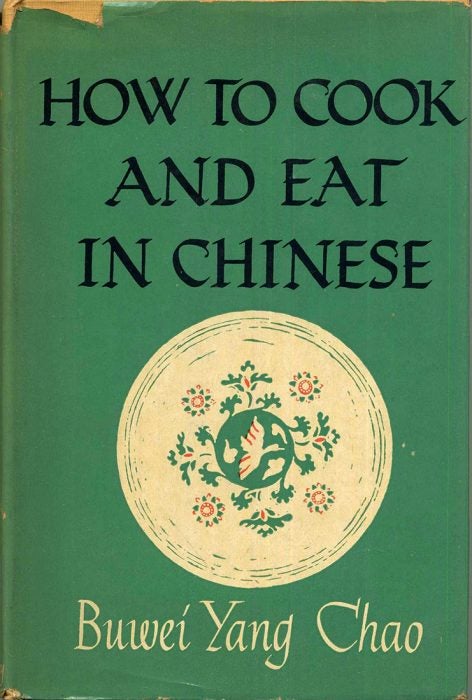What are you making for dinner tonight? If the answer is a stir-fry or some steamed pot-stickers, you can thank Chao Yang Buwei and her husband, Chao Yuen Ren, who invented those names for Chinese-American dishes. Charles W. Hayford explains how the Chaos’ 1945 cookbook, How to Cook and Eat in Chinese, introduced Chinese cooking to white American cooks.
Chinese food had a limited place in American culinary habits well before the Chaos. In the 1890s, Hayford writes, a “chop suey craze” drove white Americans to Chinese restaurants. Restaurants serving white customers in urban Chinatowns developed a selection of south China dishes, including sweet and sour pork, chow mien, egg foo young, and egg rolls. Meanwhile, “American chop suey” was popular enough that the U.S. War Department included it in its 1916 Manual for Army Cooks.

But even the narrow selection of dishes curated for the American palate didn’t make it into many white home kitchens for decades. After World War I, American housewives expanded into new, urbane territory by learning to make Italian dishes (often toning down robust flavors). But even international-themed U.S. cookbooks barely touched East Asian food. In her popular 1935 book, Recipes of All Nations, Countess Morcelle Morphy explicitly stated that the cuisines of India, China, and Japan were “too remote to be fully understandable” to American cooks.
The Chaos thought otherwise. Chao Yan Buwei was one of China’s first female medical doctors, while Yuen Ren had spent a decade studying in the United States before the two met. Hayford places the couple in the New Culture Movement of 1916-1923, which envisioned a new, globally minded Chinese society.
“These cosmopolitans were comfortable in western clothes, read Ibsen and Nietzche, and aspired to bring China into the Wilsonian league of democracies,” he writes.
John Day, the house that published How to Cook and Eat in Chinese, also embraced international cultural exchange. Headed by Pearl S. Buck’s husband, Richard Walsh, it had published The Good Earth in 1931, followed by a variety of books about Asia, by Asian authors. In a preface to the cookbook, Buck asked “what better road to universal peace is there than to gather around the table where new and delicious dishes are set forth…”
After Pearl Harbor, Americans found themselves allied with China, and many were eager to get to know the country better. The cookbook offered an approachable introduction. It included home-cooking recipes from various regions of China but avoided much explanation of the regional cuisines, instead conjuring up an idea of a unified “Chinese food” that didn’t exist in China. Yuen Ren, who had previously translated Alice in Wonderland into Chinese, supplied clever, sometimes jokey, explanations for the recipes. Some of his neologisms, like stir-fry and pot stickers, are still with us today. Others—“ramblings” for won tons, or “leaking ladle” for slotted spoon—didn’t catch on.
Still, How to Cook and Eat in Chinese went a long way toward elevating Chinese food and culture in the eyes of an increasingly cosmopolitan U.S. population.







